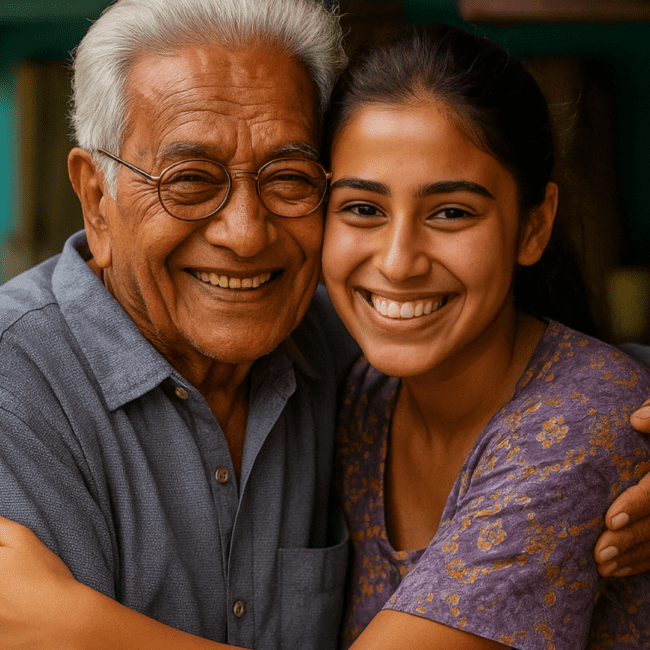Every evening, as the sun sets, millions of our elders face the night alone, their voices echoing in silent homes. This isn’t just solitude; it’s a deep, pervasive social isolation in the elderly that casts a long, lonely shadow over their twilight years. It’s a heartache that many of us fail to see, yet it’s as real as the air we breathe.
At Samarth Elder Care, we see beyond the quiet facades. We recognize the profound loneliness of the elderly, a silent epidemic that’s not just about being alone, but about feeling forgotten. It’s about the empty chair at the dinner table, the phone that doesn’t ring, and the stories that remain untold. This isn’t just about senior loneliness; it’s about preserving the dignity, joy, and essence of our aging loved ones. Through this blog, join us on a journey of empathy and understanding. Together, we strive to reconnect our seniors with the world they helped to shape, ensuring their golden years are filled with warmth, companionship, and love.
Understanding the Causes of Social Isolation in Elderly
The journey into understanding social isolation in elderly individuals reveals a complex web of factors. Key among these is the challenge posed by physical health issues and mobility constraints, often restricting their ability to engage in social interactions and community involvement. This is a primary cause of social isolation in elderly. The pain of losing family members and friends, a common occurrence in their later years, further deepens their sense of isolation, leaving an echoing void in their once vibrant social lives. Additionally, the rapid pace of technological advancement creates a digital divide, alienating them further as the world around them increasingly moves into the digital realm.
Recognizing the Signs of Social Isolation in Elderly
Identifying social isolation in elderly is crucial for timely intervention. Key indicators include:
- Withdrawal from Social Activities: A noticeable reduction in participation in previously enjoyed community events or social gatherings, a sign of social isolation and depression in elderly.
- Changes in Mood or Behavior: Shifts towards depression, anxiety, or irritability, which were not characteristic of their usual behavior, often are effects of social isolation in the elderly.
- Neglect of Personal Care or Household: Signs of declining personal hygiene, disinterest in maintaining their living space, or irregular eating habits, all pointing towards social isolation in elderly.
Other subtle signs to be aware of:
- Reduced communication or reluctance to engage in conversations, a common effect of social isolation in elderly.
- Disinterest in previously enjoyable topics or hobbies, which can be a result of social isolation and depression in elderly.
- A general sense of apathy or lack of enthusiasm for life, often stemming from social isolation in elderly.
Understanding and addressing these signs are crucial steps in preventing social isolation in the elderly and mitigating its impacts.
The Impact: Effects of Social Isolation in the Elderly
The effects of social isolation in the elderly are profound and multifaceted, impacting both physical and mental health. Social isolation and depression in elderly individuals are closely linked, with isolation significantly increasing the risk of depression. This is not just about feeling lonely; it’s about the tangible health risks that come with prolonged isolation. Studies have shown that social isolation in elderly individuals can lead to a range of health issues, including high blood pressure, heart disease, a weakened immune system, anxiety, depression, cognitive decline, Alzheimer’s disease, and even death.
Worried about your Elderly parents back home?
Call us today to arrange Care Like Son and Daughter™.
Preventing Social Isolation in the Elderly
Preventing social isolation in elderly individuals is crucial for maintaining their health and well-being. Community engagement and social activities play a significant role in this. Encouraging regular interaction with peers, participation in community events, and involvement in group activities can greatly reduce feelings of loneliness and isolation.
- Family Connections: Encourage regular family visits and communication to combat loneliness in older adults and senior loneliness.
- Community Activities: Promote participation in local events and social clubs to prevent social isolation in elderly.
- Volunteering: Encourage elderly individuals to volunteer, which can provide a sense of purpose and community involvement.
- Technology Training: Offer training in technology to help the elderly stay connected with friends and family, addressing loneliness senior citizens face.
- Regular Check-ins: Establish a routine of regular check-ins by family members or community volunteers.
- Physical Activity: Encourage regular physical activity, which can be both a social activity and a way to maintain health.
- Customized Elder Care Services: Utilize services like Samarth Elder Care to tailor support and companionship to individual needs.
Solutions and Strategies to Combat Elderly Loneliness
Addressing elderly loneliness requires a multifaceted approach. Innovative solutions include community programs, embracing technology, and supportive policies. These strategies not only alleviate loneliness of the elderly but also enhance their overall well-being.
- Social Interaction: Encourage seniors to engage in social activities, join clubs, or volunteer, fostering a sense of community and belonging.
- Physical Activity: Promote regular exercise to improve mental health and reduce the health effects of social isolation in the elderly.
- Technology: Utilize digital platforms for communication and social interaction, helping to bridge the gap caused by physical distance.
- Community Programs: Implement community initiatives that offer social, recreational, and educational opportunities for seniors.
- Policy and Support: Advocate for policies that address social isolation in elderly, ensuring they have access to necessary resources and support systems.
The Role of Technology in Connecting the Elderly
Technology plays a crucial role in mitigating social isolation and depression in the elderly. Digital platforms, online communities, and virtual activities offer new avenues for connection and engagement.
- Communication Platforms: Encourage the use of video calls, social media, and online forums to stay connected with family and friends.
- Virtual Activities: Promote participation in online classes, workshops, and social groups to maintain active engagement.
- Accessibility: Ensure technology is user-friendly and accessible, providing training and support where needed.
- Online Communities: Facilitate the creation of online communities where seniors can interact with peers sharing similar interests.
- Innovative Tools: Explore the use of companion robots, smart speakers, and other technologies to provide companionship and assistance.
Personal and Professional Approaches to Reduce Loneliness
In the battle against loneliness in older adults, especially the loneliness of elderly individuals, it’s crucial to embrace both personal and professional strategies. Personal efforts can significantly impact how to reduce loneliness in elderly individuals.
Simple daily actions, such as scheduling regular calls or visits, can nurture and strengthen relationships, providing a buffer against the effects of social isolation in the elderly. On the professional front, healthcare providers play a pivotal role. They are often the first to spot signs of social isolation in elderly patients, making them key players in preventing social isolation in the elderly. Their ability to identify and address loneliness senior citizens face is vital. They can recommend community resources or therapy, helping to mitigate the health effects of social isolation in the elderly.
This holistic approach is not just about solving social isolation in elderly; it’s about weaving a safety net of emotional and social support that upholds their dignity and well-being.
Conclusion
In wrapping up, it’s clear that tackling social isolation in elderly loved ones is more than a kind gesture; it’s a crucial aspect of their holistic health care. By understanding the effects of social isolation in the elderly and actively engaging in solving social isolation in elderly, we play a pivotal role in enriching their lives. Whether it’s through personal initiatives, community involvement, or professional support, every effort counts in combating loneliness of elderly. As we strive to create a more connected and empathetic society, let’s ensure our aging family members are not just remembered but actively included, cherished, and supported in their later years.
How Samarth Can Help?
Your parents’ well-being in their later years is our priority at Samarth Elder Care. We understand the challenges of ageing and offer tailored care plans to ensure your loved ones in India are not just cared for, but cherished. Visit our care plans to see how we can help, and for a personalized approach to your parents’ care, connect with us through our Contact Us page. Together, we can create a nurturing and respectful environment for them.







